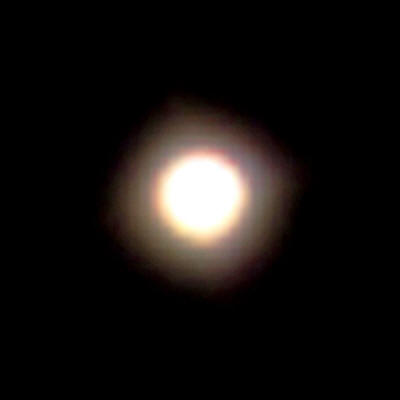Astronomers have discovered what may be five planets orbiting Tau Ceti, the closest single star beyond our solar system whose temperature and luminosity nearly match the sun's.
If the planets are there, one of them is about the right distance from the star to sport mild temperatures, oceans of liquid water, and even life. Don't pack your bags just yet, though: The discovery still needs to be confirmed.
Tau Ceti is only 12 light-years from Earth, just three times as far as our sun's nearest stellar neighbor, Alpha Centauri.
Tau Ceti resembles the sun so much that astronomer Frank Drake, who has long sought radio signals from possible extraterrestrial civilizations, made it his first target back in 1960.
Unlike most stars, which are faint, cool, and small, Tau Ceti is a bright G-type yellow main-sequence star like the sun, a trait that only one in 25 stars boasts.
Moreover, unlike Alpha Centauri, which also harbors a G-type star and even a planet, Tau Ceti is single, so there's no second star in the system whose gravity could yank planets away.
Astronomer Mikko Tuomi of the University of Hertfordshire in the United Kingdom and his colleagues analyzed more than 6000 observations of Tau Ceti from telescopes in Chile, Australia, and Hawaii.
As the researchers will report in Astronomy & Astrophysics, slight changes in Tau Ceti's motion through space suggest that the star may be responding to gravitational tugs from five planets that are only about two to seven times as massive as Earth.
If that's right, all five planets lie closer to their star than Mars does to ours; however, Tau Ceti emits only 45% as much light as the sun, so each planet receives less warmth than a planet would at the same distance from our sun.
Tau Ceti's three innermost planets - designated b, c, and d - are probably too hot to support life, being so close to the star that they require only 14, 35, and 94 days to complete an orbit. The farthest of the three, d, is about as close to Tau Ceti as Mercury is to the sun.
It's the fourth planet - planet e - that the scientists suggest might be another life-bearing world, even though it's about four times as massive as Earth.
If you lived there, you'd see a yellow sun in the sky, but your year would last just 168 days. That's because Tau Ceti e lies somewhat closer to its star than Venus does to the sun and thus revolves faster than Earth.
The fifth and outermost planet, designated Tau Ceti f, completes an orbit every 640 days and is slightly closer to its star than Mars is to the sun.
However, Tuomi's team warns that disturbances on the star itself, rather than orbiting planets, may be producing the small velocity changes in Tau Ceti.
"They're really digging deep into the noise here," says Sara Seager, an astronomer at the Massachusetts Institute of Technology in Cambridge who was not part of the team.
"The [astronomical] community is going to find it hard to accept planet discoveries from signals so deeply embedded in noise."
"They're pushing the envelope," says Gregory Laughlin, an astronomer at the University of California, Santa Cruz. "Some or even many of these planets could go away. But I think that they've done absolutely the best job that you can do, given the data."
Laughlin says it's frustrating that the most interesting planets - small ones like Earth - are so challenging to detect:
"You have to get tons and tons and tons of velocity measurements over many years, and then you really, really have to take extreme care - as this Tuomi et al. paper does - to get rid of all the systematic noise."
Team member Chris Tinney, an astronomer at the University of New South Wales in Sydney, Australia, acknowledges the problem.
"It's certainly very tantalizing evidence for potentially a very exciting planetary system," Tinney says, but he adds that verifying the discovery may take 10 years, and the scientists didn't want to wait that long.
"We felt that the best thing to do was to put the result out there and see if somebody can either independently confirm it or shoot it down."
If the planets exist, they orbit a star that's about twice as old as our own, so a suitable planet has had plenty of time to develop life much more advanced than Homo sapiens.
That may just explain why no one from Tau Ceti has ever contacted beings as primitive as us.
-
Another Interstellar Target?
-
by Ian O'Neill
December 23, 2012
from DiscoveryNews Website

Tau Ceti recently crashed into the headlines after it was announced that a system of five worlds may be in orbit around the star.
Although the exoplanets have yet to be confirmed, this discovery is profound in that one of the worlds, a "super-Earth" designated Tau Ceti "e" - may be sitting inside the star's so-called habitable zone.
The habitable zone is considered the perfect location in a star's orbit for a world to support liquid water (it's not too hot and not too cold), a substance essential for the evolution of life as we know it.
If this world is proven to exist - follow-up studies by other observatories are required to confirm its orbit and size - the 4.3 Earth-mass world will become famous for being the smallest world discovered within the habitable zone of another star.
|
|
Within Reach?
Not only is Tau Ceti's "super-Earth" a curious objective for astronomers to seek out extraterrestrial life, the nearby star could be within the reach of a future interstellar mission.
Tau Ceti may well be in our proverbial "cosmic backyard," but it is still 12 light-years from Earth.
The energies and speeds needed to make a hypothetical (unmanned) probe a reality aren't possible using current technologies, but according to Paul Gilster, co-founder of the Tau Zero Foundation and author of the book Centauri Dreams (and writer for the blog of the same name), such a feat may not remain "impossible" for too long.
"Pushing a 'lightsail' by beamed laser or microwave propulsion (leaving the 'fuel' at home) may be able to get us up to ten percent or so of the speed of light, which would give us a mission to Tau Ceti of a bit over a century," Gilster told Discovery News.
"Fusion prospects of the kind studied by Project Icarus (one of the projects managed by the non-profit organization Icarus Interstellar) are also an option, though sails have already been demonstrated in space and are further along in their development."
There's also the possibility of using antimatter to get "maximum bang for the buck," Gilster points out, but we have yet to develop a means of generating enough antimatter for it to be used as an interstellar fuel.
And then there's the tricky matter (no pun intended) of storing the stuff and controlling the reactions inside a hypothetical antimatter engine.
But this is the reason why we should be researching multiple avenues of research when it comes to the possible modes of interstellar travel.
"The Tau Zero Foundation hopes to advance the human prospect for interstellar flight by defining the issues and keeping all the propulsion options on the table," Gilster points out. "It is simply too early to down-select to a single propulsion system.
"Instead, incremental advances across the spectrum of possibilities will help us, over time, learn which methods will offer the soundest prospects. We'd like to encourage and, when it becomes possible, assist in the funding of such research.
"A second goal is to keep the idea of interstellar flight in front of the public through education, so that the relevant research is not only highlighted but supported through both philanthropy and government."
Going Interstellar By Public Demand
The selection of propulsion methods is one thing, but interstellar advocates agree that when we do detect that bona fide habitable world - with hints of a biosphere and presence of liquid water - the public will demand further study.
And that means physically going there.
"In the event a habitable planet around a nearby star like Tau Ceti is confirmed, the best next step would be a space-based observatory specifically targeting nearby stars (Kepler's targets are much more remote in order to take the statistical pulse of the planet population)," said Gilster.
(Targeted searches have been carried out by SETI, in the hope of detecting a radio signal from a hypothetical alien civilization in the Tau Ceti system - but none have detected any artificial transmissions.)
"I have often imagined the day when scientists directly image an Earth-like extra-solar planet," Icarus Deputy Project Leader Robert Freeland told Discovery News during an interview in October after the discovery of a small exoplanet orbiting Alpha Centauri (a binary star located only 4.4 light-years away).
"We would be able to determine the planet's atmosphere and surface temperature from its spectrum, and we would thus know whether it might be able to sustain life as we know it.
"I suspect that once such a discovery hits the news, people worldwide are going to demand that we send a probe to determine whether the planet has life (of any type) and/or could be suitable for human habitation," Freeland added.
"Tau Ceti is about 12 light-years away, and with the right instrumentation, we will be able to make a spectroscopic analysis of the atmospheres of planets there," Gilster said.
"If we discover a biosignature indicating life is present, this will clearly make such a planet a priority for any future probes. A probe like this could get into space in the next two decades if funding emerges."
A New Era
By extrapolating the energy we produce today, Gilster is realistic that an interstellar probe may be a long way off.
But that's not accounting for unforeseen, disruptive technologies that may rapidly enhance our ability of sending a robotic emissary (and eventually a human mission) to a nearby star.
We are truly in a new era of space exploration. Not only are we discovering a multitude of extra-solar planets, we are also advancing the role that robotics play in space. It's only a matter of time that these machines become so advanced that they will become fully autonomous - humans will be cut out of the loop.
For a robotic interstellar probe, this will be a necessity as the vast interstellar distances will quickly generate unworkable time lags of years to send and receive commands.
The speed of light will quickly become a frustrating barrier (after all, should a probe make it to Tau Ceti, it would take 12 years for us to receive the first images of any "habitable" exoplanet), the probe would be by itself, exploring in the name of humanity.
But like any interstellar concept, it's a question of energy production.
Until we find a way of overcoming this challenge, we will be forever quarantined from the promising planets orbiting neighboring stars, depending on increasingly powerful telescopes to peek into their atmospheres, frustrated that we can't see them up-close.
But with the ongoing efforts of organizations such as,
...the science behind interstellar travel will remain in the public mindset, hopefully facilitating mankind's push into the expanse between the stars while motivating exploration within the solar system.


